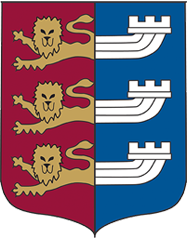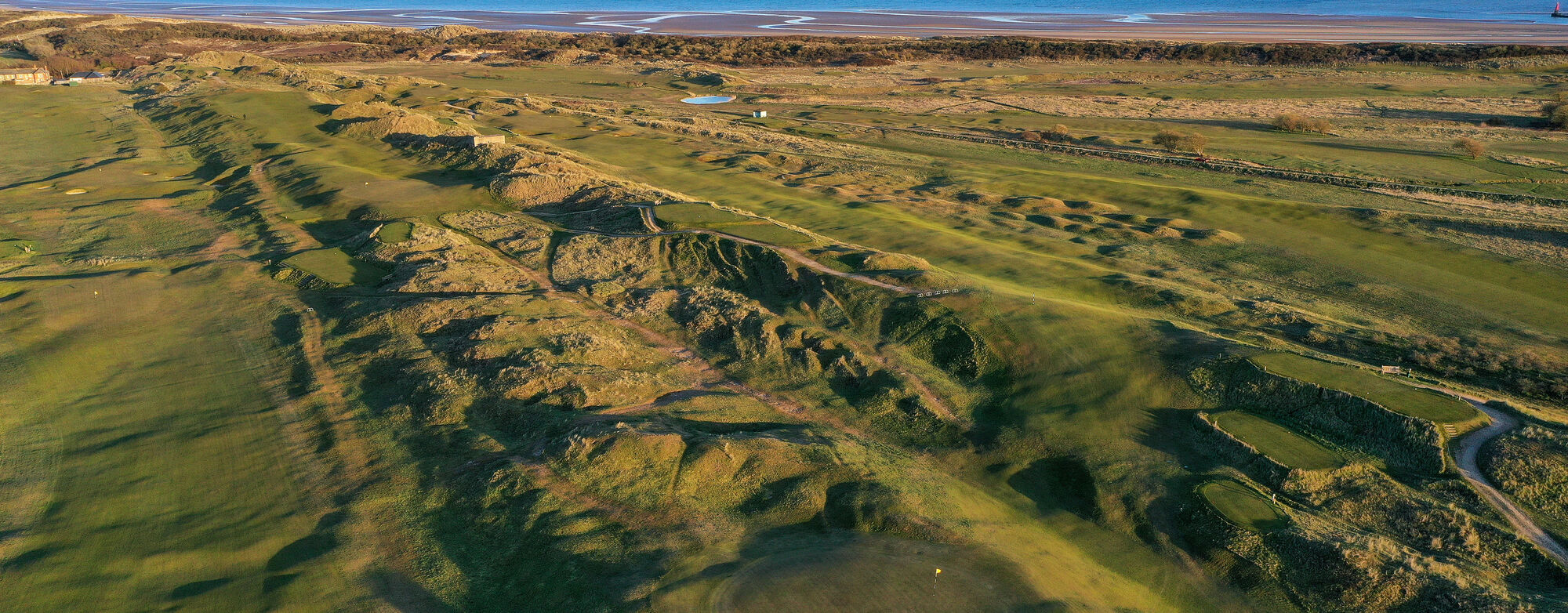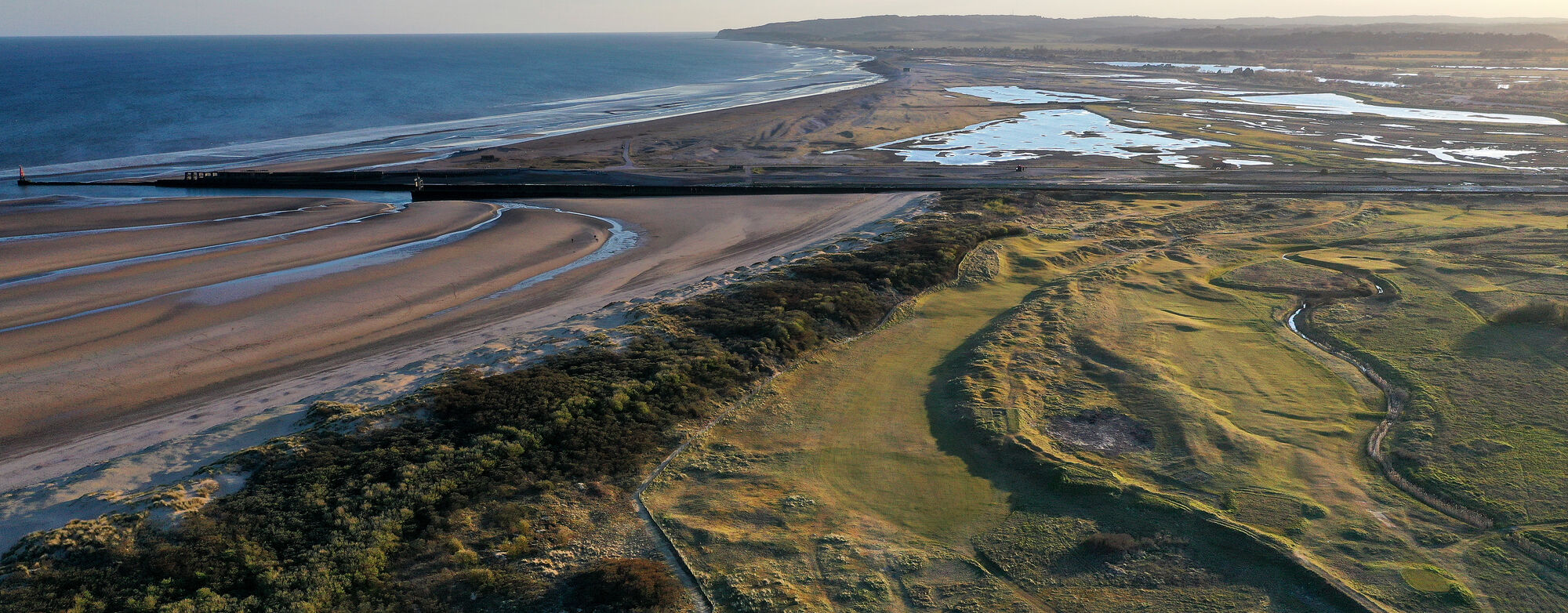Courses
Rye is a private Club and it consists of two courses, the Old and Jubilee. The courses are beautiful examples of traditional links, on the south coast of England. The first competition took place in 1894. H.S. Colt was elected as the first Captain and he designed 18 holes in 1895, which became the permanent course. This set him on a new career as a golf course designer.
Old Course
H.S. Colt was one of the founding members and the first Captain of the Club. By 1895 he had designed a full 18 holes which became the permanent course. Many alterations have been made since as the course has moved south from the marshy land towards the sea but two of his original holes, the 12th and 17th survive to this day.
The Old course consists of two nine hole loops to the east and west of the Clubhouse unlike many of the old ‘out and back’ links. As a result it has an intimate feel. Although measuring only 6,500 yards off the ’black’ tees, it presents a most demanding par of 68 with only two par fours under 435 yards especially in the prevailing cross wind. Rye is famous for the challenge of its five short holes . The often said words (‘ the most difficult shots at Rye are the second shots to the par threes) are richly deserved.
Men's
Ladies

Men Old Course Scorecard
|
|
1 |
2 |
3 |
4 |
5 |
6 |
7 |
8 |
9 |
Out |
10 |
11 |
12 |
13 |
14 |
15 |
16 |
17 |
18 |
In |
Total |
Black |
482 |
181 |
436 |
442 |
174 |
468 |
158 |
444 |
301 |
3086 |
442 |
322 |
457 |
433 |
185 |
464 |
434 |
234 |
437 |
3417 |
6503 |
Green |
482 |
181 |
436 |
412 |
174 |
468 |
158 |
392 |
301 |
3004 |
418 |
322 |
419 |
433 |
185 |
426 |
417 |
223 |
437 |
3280 |
6284 |
blue |
460 |
170 |
374 |
400 |
150 |
443 |
139 |
364 |
290 |
2794 |
404 |
311 |
383 |
410 |
168 |
392 |
403 |
163 |
417 |
3051 |
5845 |
Par |
5 |
3 |
4 |
4 |
3 |
4 |
3 |
4 |
4 |
34 |
4 |
4 |
4 |
4 |
3 |
4 |
4 |
3 |
4 |
34 |
68 |
SI |
9 |
15 |
3 |
7 |
14 |
1 |
17 |
5 |
11 |
|
6 |
16 |
12 |
2 |
13 |
4 |
10 |
18 |
8 |
|
|
orange |
434 |
115 |
359 |
384 |
142 |
389 |
128 |
347 |
284 |
2582 |
394 |
274 |
376 |
398 |
159 |
353 |
383 |
156 |
376 |
2869 |
5451 |
SI |
9 |
15 |
3 |
7 |
14 |
1 |
17 |
5 |
11 |
|
6 |
16 |
12 |
2 |
13 |
4 |
10 |
18 |
8 |
|
|
Par |
5 |
3 |
4 |
4 |
3 |
4 |
3 |
4 |
4 |
34 |
4 |
4 |
4 |
4 |
3 |
4 |
4 |
3 |
4 |
34 |
68 |
Ladies Old Course Scorecard
|
|
1 |
2 |
3 |
4 |
5 |
6 |
7 |
8 |
9 |
Out |
10 |
11 |
12 |
13 |
14 |
15 |
16 |
17 |
18 |
In |
Total |
Green |
482 |
181 |
436 |
412 |
174 |
468 |
158 |
392 |
301 |
3004 |
418 |
322 |
419 |
433 |
185 |
426 |
417 |
223 |
437 |
3280 |
6284 |
blue |
460 |
170 |
374 |
400 |
150 |
443 |
139 |
364 |
290 |
2794 |
404 |
311 |
383 |
410 |
168 |
392 |
403 |
163 |
417 |
3051 |
5845 |
Par |
5 |
3 |
4 |
5 |
3 |
5 |
3 |
4 |
4 |
36 |
5 |
4 |
4 |
5 |
3 |
5 |
5 |
3 |
5 |
39 |
75 |
SI |
9 |
11 |
1 |
7 |
15 |
5 |
13 |
3 |
17 |
|
16 |
8 |
2 |
6 |
14 |
4 |
12 |
18 |
10 |
|
|
orange |
434 |
115 |
359 |
384 |
142 |
389 |
128 |
347 |
284 |
2582 |
394 |
274 |
376 |
398 |
159 |
353 |
383 |
156 |
376 |
2869 |
5451 |
SI |
9 |
17 |
1 |
5 |
15 |
7 |
11 |
3 |
13 |
|
4 |
12 |
2 |
8 |
14 |
6 |
10 |
18 |
16 |
|
|
Par |
5 |
3 |
4 |
5 |
3 |
5 |
3 |
4 |
4 |
36 |
4 |
4 |
4 |
5 |
3 |
4 |
5 |
3 |
5 |
37 |
73 |
RYE GOLF COURSE
At this time of year it is almost certain that there will be an east wind which is inclined to spoil the balance of the course and make it infernally difficult. This wind blows from the Coastguard cottages virtually against at the first three holes. Therefore, five, three, five is a respectable start. In this instance it is important to notice the position of the direction flag at the first hole which one has known to be misleading. Get the tee shot down the middle at all costs and a five will win it more often than not on an important occasion.
The second is a great short hole with all the trouble gathered in the deep bunkers on either side of a pear shaped green. Be up and if you miss it, miss it long.
Third Hole . Drive left side of the fairway.
Fourth . The farther you drive the narrower it gets. Avoid the pit on the left. In an east wind take an iron from T.
Fifth . A great short hole. Do not miss it on the left. Don't be short.
Sixth . A blind drive and do not miss the fairway on the left as the ball stays up on the bank full of rabbit holes.
Seventh . A great short hole. If you miss the green miss it left and long.
Eighth . Drive left of the fairway.
Ninth . Drive to mid on. Followed by tricky little pitch.
Tenth . Drive left again. Followed by a great second shot.
Eleventh . Easy drive. Be careful not to hit your second too far. There is an old railway line at the back of the green which is a hazard.
Twelfth . Prefer the right side of the fairway from the T. It is very easy to over hit your second. Remember there is a bunker behind the left half of the green.
Thirteenth . (The famous sea hole). Drive right side of the fairway. Followed by a blind second which must be up.
Fourteenth . A great short hole. If you are going to miss the green miss it left into one of the two bunkers. The grass bunker on the right is full of divot marks!
Fifteenth . Drive left where the fairway is flatter than on the right.
Sixteenth . If you cannot reach the bunker in the bank, drive straight at it. If you can reach it, keep right. The second must be a good one.
Seventeenth . The most fluky hole on the golf course, but always aim to miss it long. The chip back is dead easy.
Eighteenth . From the tee aim at the right hand window of the clubhouse and avoid the pit and scrub on the right of the fairway at all costs and if the bolts in your knees are still firm you will hit a good second.
Leonard G. Crawley
Walker Cup 1932, 1934, 1938, 1947 | President's Putter Winner 1932, 1947, 1951, 1952
Jubilee Course

Jubilee Course Scorecard
|
|
1 |
2 |
3 |
4 |
5 |
6 |
7 |
8 |
9 |
Out |
10 |
11 |
12 |
13 |
14 |
15 |
16 |
17 |
18 |
In |
Total |
Black |
388 |
232 |
431 |
440 |
323 |
480 |
146 |
363 |
398 |
3201 |
388 |
232 |
431 |
440 |
323 |
402 |
169 |
508 |
340 |
3233 |
6434 |
Green |
388 |
175 |
376 |
386 |
323 |
480 |
146 |
363 |
398 |
3035 |
388 |
175 |
348 |
386 |
152 |
402 |
169 |
508 |
340 |
3877 |
5903 |
Blue |
372 |
167 |
368 |
374 |
320 |
477 |
128 |
290 |
390 |
2886 |
372 |
167 |
334 |
374 |
147 |
380 |
130 |
476 |
333 |
2713 |
5599 |
Orange |
309 |
159 |
328 |
364 |
313 |
419 |
123 |
288 |
328 |
2631 |
309 |
159 |
338 |
364 |
144 |
335 |
130 |
451 |
274 |
2494 |
5125 |
SI |
11 |
13 |
7 |
3 |
15 |
1 |
17 |
5 |
9 |
|
12 |
14 |
8 |
4 |
16 |
2 |
10 |
6 |
18 |
|
|
Par |
4 |
3 |
4 |
4 |
4 |
5 |
3 |
4 |
4 |
35 |
4 |
3 |
4 |
4 |
4/3 |
4 |
3 |
5 |
4 |
35/34 |
70/69 |
Rye
The Confidential Guide to Golf Courses: Volume 1, Great Britain & Ireland
So, what to make of Rye? Like most of the famous links in the UK and Ireland, golf started to be played here before golf course design was even a hobby, much less a profession, and the plan of the course has evolved through several iterations from a rudimentary start. The original layout was done by a young solicitor named Harry Colt, several years before he set out on his architectural career; but much of Colt's routing was tangled up with the busy public road to Camber, and the course has had to evolve away from it over time. Luckily, more good ground was becoming available for use, as the Rye harbor continued to fill up with sand deposits. The site of today's 13th green was part of the beach in 1894; today the same spot is 300 meters from the sea! This is the true nature of linksland, as
mother Nature can be unstoppable when she is in a creative mood.
The centuries of coastal winds formed a number of sharp dune ridges and valleys, and the routing of today's course tackles them from every possible angle. You play along the base of a ridge for the first three holes, then climb up and play atop the ridge at the long par-4 4th. At the short 5th, you leap from one dune ridge to another; at the 6th, you drive diagonally over a ridge, and then play up the back side. At the 13th, you play over a diagonal ridge for the blind second shot to the Sea Hole; at the 16th and again at the 18th, you drive from low ground up onto one of the ridges, on opposite diagonals. In fact, this wonderful routing is the product of several successive routings, each shaped by a subsequent designer who added at least one of the best holes to the course we know today: The fine green sites at the 15th and 16th are part of Colt's original plan, though both holes have been lengthened considerably, and the par-4 18th finishes atop the santeridge, although the tee shot over the "Soup Bowl" bunker was lost to a re-routing and to construction during the war. The green at the short 5th was put up on the ridgetop by the club's committee chair Clement Archer, in 1907. Tom Simpson created the short par 4 9th and the par-3 17th in 1932, when he was hired to eliminate the road crossings.
Sir Guy Campbell discovered the wonderful 4th hole in 1938, giving him more elbow room to improve the opening stretch. Last, but certainly not least, Major H.C. Tippet, who had a hand in designing several courses in America before the Crash of 1929, was appointed secretary to the club at the end of World War Il, and created the short 2nd and 7th holes in the process of getting the course back into play, just before his death in 1947.
For me, it's a wonder that Rye isn't a fixture as one of the top 50 courses in the world, especially since it hosts one of the game's great competitions the President's Putter matches of the Oxford & Cambridge Golfing Society, played in the nastiest of winter weather. For years, I thought it must be held back because its par of 68 is too challenging to the establishment; but now I am starting to wonder if the inability to tag the design
with one famous designer's name is holding it back somehow - even if that is exactly why the course is so good.
Tom Doak
The Confidential Guide to Golf Courses: Volume 1 - Great Britiain and Ireland - 2014
.jpg)
.jpg)
"Surely there can nowhere be anything appreciably better than the golf to be had at this truly divine spot."












